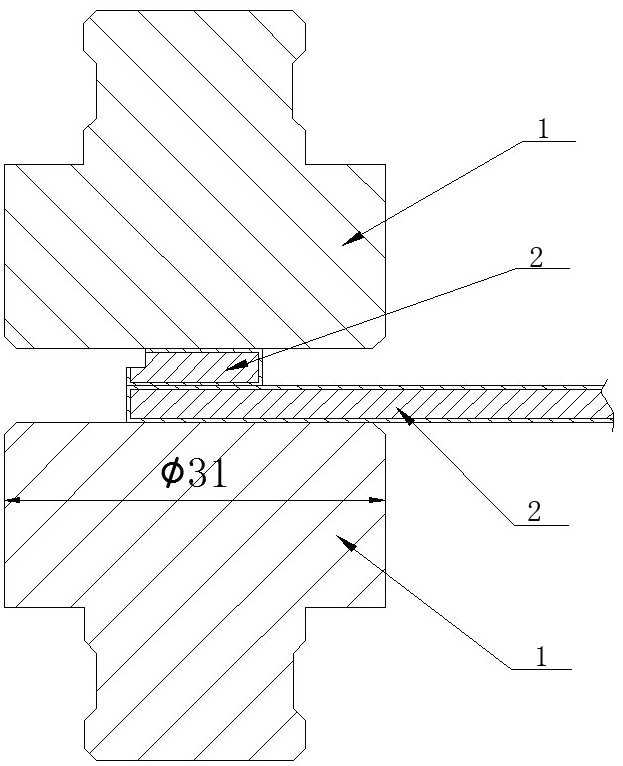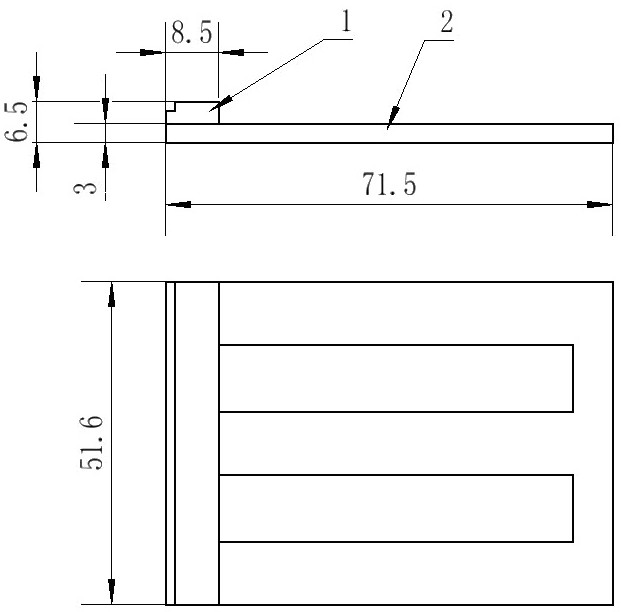A welding process for copper-aluminum composite row
A copper-aluminum composite row and welding process technology, which is applied in welding equipment, welding power sources, welding/welding/cutting items, etc., can solve the problems of difficulty in welding, damage to the performance of raw materials, high resistance, etc., and achieve the effect of ensuring welding quality.
- Summary
- Abstract
- Description
- Claims
- Application Information
AI Technical Summary
Problems solved by technology
Method used
Image
Examples
Embodiment Construction
[0015] In order to better understand and implement, the present invention will be further described below in conjunction with the accompanying drawings: (1) Cotton balls are used to apply special flux to the welding surface of the copper-aluminum composite row that needs to be overlapped. The special flux mainly includes a concentration of 35%. Hydrochloric acid, nitric acid with a concentration of 68% and water, the mixing mass ratio of the three is 5:1:5, the purpose is to remove the oxide layer on the surface of the material and increase the fluidity of the solder paste. Applying this flux can effectively solve the lack of soldering on the soldering surface ;
[0016] (2) Among the two welding surfaces, select one of the overlapping parts, and evenly apply special solder paste 1.5mg / mm 2 , the special solder paste includes silver tin powder and industrial alcohol with a concentration of 95%. The silver tin powder includes 3% silver and 97% tin. The mixing mass ratio of silv...
PUM
 Login to View More
Login to View More Abstract
Description
Claims
Application Information
 Login to View More
Login to View More - R&D
- Intellectual Property
- Life Sciences
- Materials
- Tech Scout
- Unparalleled Data Quality
- Higher Quality Content
- 60% Fewer Hallucinations
Browse by: Latest US Patents, China's latest patents, Technical Efficacy Thesaurus, Application Domain, Technology Topic, Popular Technical Reports.
© 2025 PatSnap. All rights reserved.Legal|Privacy policy|Modern Slavery Act Transparency Statement|Sitemap|About US| Contact US: help@patsnap.com


